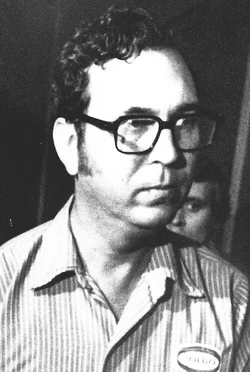
1927 - 1998
Neal Bradley Long
Summary
Name:
Neal Bradley LongNickname:
The Shotgun Slayer / The Midnight SlayerYears Active:
1972Birth:
September 19, 1927Status:
DeceasedClass:
Serial KillerVictims:
7+Method:
ShootingDeath:
June 12, 1998Nationality:
USA
1927 - 1998
Neal Bradley Long
Summary: Serial Killer
Name:
Neal Bradley LongNickname:
The Shotgun Slayer / The Midnight SlayerStatus:
DeceasedVictims:
7+Method:
ShootingNationality:
USABirth:
September 19, 1927Death:
June 12, 1998Years Active:
1972bio
Neal Long was born on September 19, 1927, in Campton, Kentucky. In 1944, he moved to Dayton, Ohio, where he lived for most of his life before his arrest. In the late 1940s, Neal got married and eventually had seven children. However, by the mid-1960s, he started to show signs of mental illness and began acting violently towards Black people.
On October 31, 1966, Neal went to the police and claimed that back in the summer of 1944, when he was 17, he and a friend were attacked by two Black men on Washington Street. Neal said he had stabbed one of the men in self-defense and then ran away, leaving the man bleeding. The police detained Neal for a while but later released him because they couldn't find any record of such an incident happening.
Neal's mental health continued to decline, so in 1968, he sought help from a psychiatrist. He agreed to go for treatment at the Dayton Mental Health Center, where he stayed for three months. While there, doctors diagnosed him with a psychopathic personality disorder. Neal had always been interested in firearms and military items, and he owned several pistols and shotguns.
At the time of his arrest, Neal was in the middle of a divorce and working at a service station in Kettering. In 2016, a former Dayton police officer told the Dayton Daily News that Neal might have been the person who killed Lester Mitchell, an African American man, in 1966. Mitchell's death had sparked the 1966 Dayton race riot, and his killer was never found.
murder story
On the afternoon of September 19, 1975, Neal Long walked into the Federal Office building and asked for Dr. Charles A. Glatt, a 46-year-old sociologist. When Dr. Glatt answered, Long shot him four times in the neck, chest, and abdomen. Security guards arrested Long a few minutes later. Dr. Glatt was taken to the hospital but died three hours after the shooting due to complications. Dr. Glatt worked at Ohio State University and was a leading expert in creating desegregation busing programs for public schools. By 1975, he had made plans to end segregation in 18 states and was working on a similar program for Dayton's schools. Long said he killed Dr. Glatt because he believed the desegregation programs would cause conflicts and higher crime rates, and he feared his 12-year-old son, Mark, would be harmed by African-American students.
After his arrest, Long confessed to committing between 25 and 30 attacks on Black people in Dayton between 1972 and 1975 while under the influence of alcohol and drugs. He admitted to using a double-barrel shotgun to shoot people from his Ford Fairlane, resulting in several deaths. These murders caused panic in the community, and the killer was nicknamed 'The Shotgun Slayer' or 'The Midnight Slayer.' A $10,000 reward was offered for information leading to his capture. Despite efforts by the townspeople and civil rights groups to keep the community safe, the Dayton police could not solve the case and sought help from the FBI, which was denied. Initially, Long's confession was doubted, but survivors and witnesses later identified him as the shooter. A search of his apartment revealed several shotguns and pistols hidden in pillowcases.
Based on Long's confession and the evidence, investigators charged him with several attacks and six murders in addition to Dr. Glatt's killing. He was charged with shooting Eddie Freson on August 21, 1972, who survived; the September 26, 1973, murder of Edward Tillman and the wounding of James Watts; the May 23, 1975, shooting at a party that injured George Ingram; the July 1975 murders of Larry Romine and Robert Hoard; and the attempted murders of Leonard Goff and Glenda Gay. Long admitted his actions were motivated by his hatred of Black people.
In late September, Long's lawyers requested a psychiatric evaluation to determine his sanity. The results, released on November 4, found Long sane and fit for trial. The trial for Dr. Glatt's murder began in late 1976. Long admitted his guilt and showed remorse. In November 1976, he pleaded guilty to civil rights violations and first-degree murder for killing Dr. Glatt and received two consecutive life sentences on December 27. In 1977, to avoid a possible death sentence, Long pleaded guilty to three additional murder charges in state court and received three more life terms plus 22 to 85 years. The plea deal was made because a key witness, Leonard Goff, had died of a drug overdose.
Due to the high-profile nature of his crimes, Long was moved to various federal institutions outside Ohio under an assumed name for his safety. In the mid-1990s, he was transferred to the Federal Medical Center in Rochester, Minnesota, where he died on June 12, 1998.